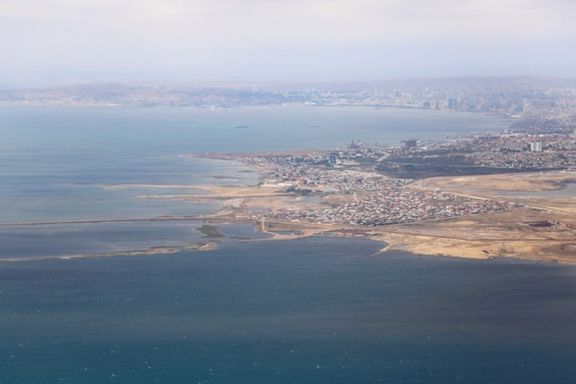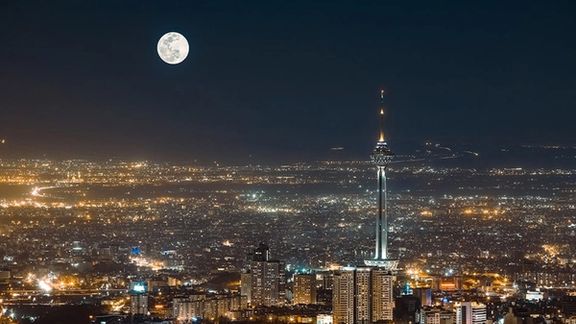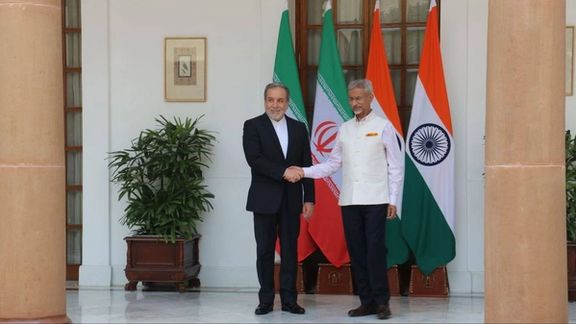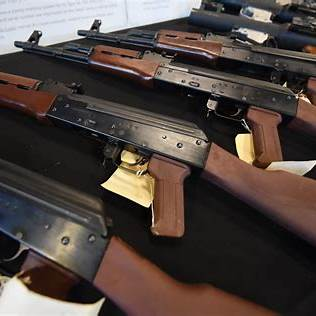Iran issues first Caspian Sea drilling order in three decades

Iran has issued its first drilling order in the Caspian Sea in nearly 30 years, aiming to revive long-stalled exploration in the region, Oil Minister Mohsen Paknejad said on Friday.

Iran has issued its first drilling order in the Caspian Sea in nearly 30 years, aiming to revive long-stalled exploration in the region, Oil Minister Mohsen Paknejad said on Friday.
Paknejad said the new operations could unlock substantial reserves. “There is potential to extract over 600 million barrels of crude oil in place from this area,” he told reporters on the sidelines of the 29th International Oil Exhibition in Tehran.
Exploratory drilling in Iran’s sector of the Caspian Sea had been largely inactive since the mid-1990s, due to technical, financial, and logistical challenges.
The minister did not specify when drilling would begin or which block would be targeted first.
The decision marks a renewed effort to join other Caspian littoral states — including Russia, Azerbaijan, Kazakhstan, and Turkmenistan — that have developed significant offshore production in recent decades.
Iran remains the only Caspian country not currently extracting oil or gas from the sea. According to industry data, the region’s other coastal states collectively produced over 1.2 million barrels per day of oil and 50 billion cubic meters of gas in 2023, backed by more than $160 billion in cumulative investments.
International companies such as BP, TotalEnergies, Lukoil, Eni, and Dragon Oil have led offshore development in neighboring states. Meanwhile, Iran’s own efforts have faced repeated setbacks, including equipment failures, limited foreign investment, and deepwater technical constraints.
Despite previous announcements, including seismic surveys and attempted drillings using the Amir Kabir rig, Iran’s Caspian offshore activity has yielded no commercial output to date.

An Iranian graduate student detained for six weeks as part of the Trump administration’s immigration crackdown has decided to voluntarily leave the United States, even after the government dropped the initial charge that led to his arrest, the Associated Press reported on Friday.
Alireza Doroudi, a mechanical engineering student at the University of Alabama, was detained in March and held at a facility in Louisiana after his visa was revoked. A US government attorney later said the revocation was “prudential,” meaning it would not take effect until he left the country.
Doroudi’s lawyer, David Rozas, told AP there was no evidence to support the government’s earlier claim that Doroudi posed a national security risk. He called the case a “travesty of justice.”
Doroudi’s fiancée, Sama Ebrahimi Bajgani, said the prolonged detention left him feeling pressured to abandon his legal challenge. “They just want to make him tired so he can deport himself,” she told AP.
In a letter written from detention, Doroudi called the case “pure injustice” and said he had followed all legal procedures. The immigration judge in the case denied his request for bond and set a deadline at the end of May for further motions. Rozas said Doroudi chose to stop fighting and self-deport.
Doroudi had specialized in metallurgical engineering, and his detention sparked concern on campus. The University of Alabama College Democrats described the arrest as a “cold, vicious dagger through the heart of UA’s international community.”
Doroudi’s case comes amid renewed scrutiny of the Trump administration’s policies on international students, including potential new visa restrictions for citizens of countries like Iran. In recent weeks, several other foreign students and recent graduates — including individuals from Turkey and Palestine — have been detained under national security-related reasons, prompting concern from rights groups and legal advocates.

Iran’s capital is grappling with renewed electricity outages but growing evidence suggests the burden of power cuts is falling unevenly across the city, raising concerns over social equity and institutional bias in blackout management.
According to reports from Iranian media and residents, working-class neighborhoods in southern and western Tehran are experiencing up to four hours of daily blackouts, while more affluent districts in the north remain largely unaffected.
This disparity, once a topic of speculation among citizens, has now been corroborated by the reformist leaning Ham-Mihan newspaper, and acknowledged in comments by both energy officials and lawmakers.
A recent field investigation by Ham-Mihan found that nearly 75% of documented blackouts in Tehran province during the first two months of the Iranian calendar year (started March 20) occurred in lower-income areas. In contrast, power remained uninterrupted in wealthier northern districts, even during periods of peak demand.
While Tehran Electricity Distribution Company had released a blackout schedule for spring, residents across marginalized neighborhoods say cuts have been occurring unpredictably and far more frequently than indicated.
“We have power outages twice a day — sometimes lasting up to two hours each,” a resident of Islamshahr, a southern suburb, wrote online. Meanwhile, a resident in District 2, in northern Tehran, reported no outages since the start of the blackout cycle.
The discrepancies have sparked a wave of criticism on social media and from public figures.
Hossein Selahvarzi, a prominent economist and former head of Iran’s Chamber of Commerce, wrote: “If it is true that outages in the south of Tehran are more frequent than in the north, then our problem is not only energy imbalance — it is also a failure of social justice.”
In comments to Ham-Mihan, a senior official from Tehran’s regional power grid admitted the blackout pattern is not accidental. “To maintain network stability, we concentrate outages in outlying districts,” the unnamed source said.
“Blackouts in central or northern Tehran have political and media consequences that we try to avoid.”
The issue of unequal energy access is not confined to Tehran.
Hussein Haghverdi, a member of parliament representing the towns of Malard, Shahriar, and Qods in Tehran province, has publicly accused the Ministry of Energy of discriminatory energy allocation.
In a letter to Energy Minister Abbas Aliabadi, Haghverdi said that while the capital’s industrial zones faced a 50-megawatt blackout quota, neighboring residential and industrial towns were subjected to four times that amount.
“This vast disparity is unacceptable and has caused widespread dissatisfaction,” he wrote.
With temperatures rising and demand for cooling surging — particularly through water-intensive swamp coolers — Tehran’s daily water usage has already exceeded 3.1 million cubic meters.
Iran’s hydroelectric capacity — once a key component of the energy mix — has been severely curtailed by a historic drought.
Officials have warned that continued overconsumption could lead to even harsher cuts, with punitive 12-hour blackouts possible for chronic overusers.
But critics argue that the current approach to energy rationing lacks transparency and reinforces systemic inequalities.
“You can’t ask citizens to sacrifice while shielding elite districts from the consequences,” said an environmental policy expert in Tehran who requested anonymity. “This is not just a technical failure — it’s a governance issue.”
With no immediate relief in sight, the government is under mounting pressure to ensure that conservation efforts — and their consequences — are distributed fairly.
As one Ham-Mihan editorial put it: “The blackout map is becoming a social map — and it is illuminating more than just who has electricity.”

New satellite imagery shows two US B-52 bombers deployed at the Diego Garcia airbase in the Indian Ocean, reinforcing Washington’s long-range strike posture near Iran as nuclear talks remain postponed, Newsweek reported Thursday.
The image, captured by the European Space Agency’s Sentinel-2 satellite on May 7, was first identified by open-source analyst MT Anderson and shows aircraft matching the dimensions of B-52 bombers parked at the US Naval Support Facility.
The B-52s join a buildup of US assets at the base, including previously deployed B-2 stealth bombers, C-17 cargo planes, and aerial refueling tankers, according to Air & Space Forces Magazine and The War Zone.
The enhanced deployment follows months of rising tensions between Washington and Tehran. While US President Donald Trump has said he prefers a peaceful resolution to the standoff over Iran’s nuclear program, he has also warned of military action if no agreement is reached.
Tehran has rejected talks outside the framework of the 2015 nuclear deal.
In March, a senior Iranian military official warned that Iran would target the joint US-UK base on Diego Garcia if it is used to launch attacks. “There will be no distinction in targeting British or American forces if Iran is attacked from any base in the region or within range of Iranian missiles,” the official told The Telegraph.
However, the remote Indian Ocean base is located some 3,800 kilometers from Iran—beyond the estimated 2,000-kilometer range of Iranian ballistic missiles.
A UK government spokesman condemned the threats at the time, calling the base “vital to UK and US security” and underscoring London’s efforts to promote de-escalation in the region.
Diego Garcia has previously been used to launch US strikes in Iraq and Afghanistan. The latest deployments suggest the US is positioning for potential large-scale operations, even as diplomatic efforts with Tehran remain uncertain.

Iranian Foreign Minister Abbas Araghchi called for restraint between India and Pakistan during his visit to New Delhi on Thursday as tensions continue to rise following last month’s deadly attack on tourists in Indian-administered Kashmir.
“We hope that India and Pakistan will prevent the escalation of tension in the region,” Araghchi said, according to Iranian state media. “Our region needs peace, especially to expand economic cooperation between regional countries, and we hope this will happen.”
The visit, planned before the attack, is focused on co-chairing the Iran-India Joint Commission meeting with Indian External Affairs Minister S. Jaishankar.
India is a key trading partner for Iran, in spite of global sanctions, and the upcoming talks are expected to cover trade, energy, and infrastructure cooperation.
Araghchi arrived in India after meetings in Islamabad earlier this week, where he held talks with Pakistani Foreign Minister Ishaq Dar, President Asif Ali Zardari, and Prime Minister Shehbaz Sharif.
The diplomatic trip comes days after India launched airstrikes on what it said were “terrorist camps” in Pakistan in response to the attack in Kashmir’s Baisaran Valley, which killed 26 civilians, including 25 Indian tourists.
Pakistan denied involvement and said the Indian strikes killed at least 31 civilians, vowing to respond.
Iran has offered to mediate between the two nuclear-armed neighbours, though New Delhi has rejected third-party involvement, according to local media.

Despite a new law targeting the illegal arms trade, Iran’s underground gun market continues to thrive on encrypted Telegram channels where vendors openly offer firearms ranging from pistols to Kalashnikov rifles.
The updated legislation, signed into effect on Tuesday by President Masoud Pezeshkian, imposes harsher sentences for unlicensed gun possession and criminalizes the use of digital platforms to promote or sell weapons.
But Telegram remains awash in posts advertising weapons for prices between 200 million and 1.8 billion rials—roughly $240 to $2,200 at the current exchange rate of 820,000 rials per US dollar.

In one 17,000-member channel, a vendor offered a Glock 17 pistol for 280 million rials ($340), a Makarov for 240 million ($290), and a Turkish-made Colt .45 for 360 million ($440). For higher-end buyers, a Kalashnikov was listed at 1.7 billion rials ($2,070), including a video showing it wrapped in cloth beside two full magazines.
“Payment is in Tether,” said one seller when contacted anonymously via Telegram, referring to a cryptocurrency. “Once confirmed, you’ll receive a location—usually a locker in a shopping mall. You have two hours to retrieve it.”

Posing as a buyer we messaged five sellers across different channels. All insisted on cryptocurrency, none offered verification and two responded with identical language and price lists—raising doubts about authenticity.
But sources in Tehran familiar with the illicit trade said the market is not entirely fake. “There are scams, yes,” one source said. “But there are many real vendors. People share experiences, and some of these sellers have been delivering for years.”

Iran’s newly amended firearms law significantly broadens the scope of punishable offenses. Beyond illegal possession, it targets sellers, repairers and those who promote or advertise firearms online.
Penalties range from three to fifteen years in prison depending on the type of weapon, with automatic firearms, heavy arms, and military-grade munitions drawing the harshest sentences.
A clause in the law also authorizes authorities to seize properties, vehicles, or storage facilities used in connection with arms crimes.
According to the text, any digital promotion, sale, or training activity linked to firearms is subject to prosecution.

The law also tightens control over airguns, mandating that those in possession of PCP rifles over 40 joules must surrender them within three months or face penalties equivalent to those for illegal hunting rifles. Owners of PCPs under the threshold must apply for a license.
Still, on Telegram, enforcement appears limited. Sellers openly post weapons and use emojis of guns, bombs, and fire to attract attention.

Sources say these weapons are often smuggled in from Turkey, Iraq, or via the Persian Gulf and may be resold multiple times through local intermediaries. “The dealers who actually deliver have networks,” said a source in Tehran. “They use trusted people. Some even have police protection.”
Iran’s black market extends far beyond guns. Unlicensed alcohol, sex work under the guise of massage services, and a growing narcotics scene—from cocaine to synthetic pills—share the same digital infrastructure, relying on anonymity, encrypted platforms, and rapid logistics.

While authorities promise firm implementation of the new law, Telegram channels remain easy to find and quick to rebrand. For buyers, the market is a gamble. But according to those familiar with Tehran’s illicit economy, enough vendors deliver to keep demand alive.